"It sounds like a piece of Hawking-like speculative theorising. When can it be possible to drive a brand new car that is actually over 30 years old? Well now actually Steve, and it's got nothing to do with string theory or "

Lotus wizardry – turning the average into the spectacular
When Lotus paired up with some more commonplace brands, we were treated to working-class heroes
Young people today would be forgiven for assuming Lotus is all about lightweight, mid-engined wedge-shaped sports cars. After all, when the current line-up consists of the Evora, Elise, and Exige, how could you possibly see Lotus going about work any differently? Could you really comprehend the existence of – for example – a Lotus Insignia?
No, of course you couldn’t, that would be quite mad. Wouldn’t it?
There was a time though when Lotus used to sneak around to some other manufacturers’ factories, steal a few rather mundane machines, and take them home to have its way with them. Under Lotus’s expert direction, these weedy machines blossomed into something a bit special, but not completely unobtainable. This, then, is a brief story of these working-class heroes.
Lotus Cortina
It all began back in the 1960s with a friendly partnership between Ford and Lotus. With Lotus using Ford-associated designers to help develop a new twin-cam engine for Colin Chapman’s creations. While this engine was in development, Ford asked if it could be fitted into a Ford Cortina body shell for motorsport homologation rules. Mr Chapman naturally said yes, sensing a big opportunity, the only problem was his factory was just gearing up to pump out its new sportscar – the Elan.
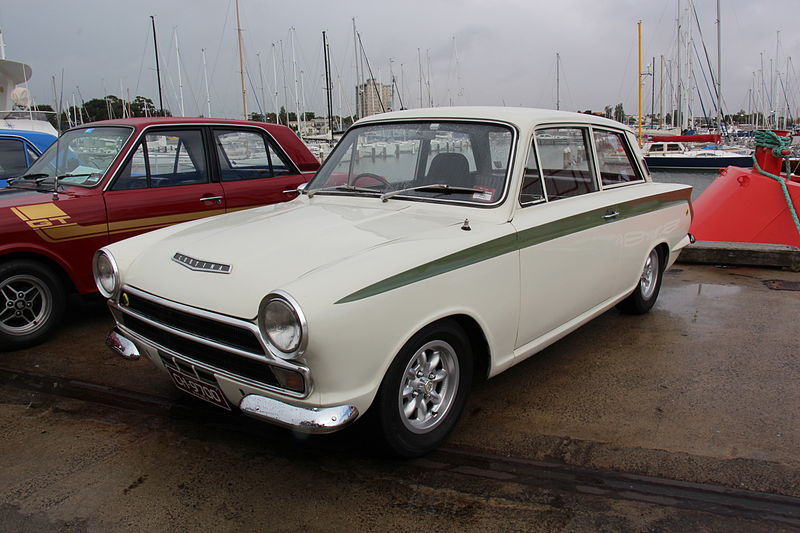
Somehow, Colin and his company did manage to get both cars going, and the Lotus Cortina was equipped not only with the 1.6-litre 105bhp engine, but with a whole host of other upgrades. The 4-speed gearbox from the new Elan was added, the rear suspension overhauled, new brakes fitted, and (being Lotus) some lightness was added in the form of lighter alloy parts used on the bonnet, doors, and boot. Lotus pumped so many improvements into the Cortina, regular Ford dealerships had a very difficult time looking after them.
Almost all Lotus Cortinas were painted white with distinctive green stripes down the side of the car, making them really stand out from the crowd. If that wasn’t enough, it also stood out on the circuits too, punching well above its weight by regularly defeating rivals with significantly larger engines.
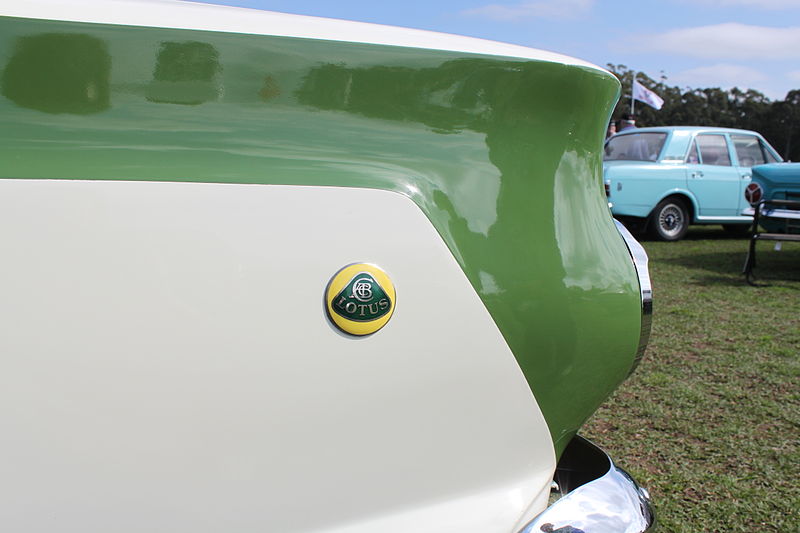
Sunbeam Lotus
This romantically-named hatchback set the rally world on fire when it ended the Ford Escort’s dominance of the Rally of Great Britain. The Talbot Sunbeam Lotus evolved from the rather uninspiring Talbot Sunbeam into something really quite remarkable – a 2.2-litre, rear-wheel drive hatchback capable of reaching 60mph in 6.6-seconds and possessing an impressive 150bhp. In the early 1980s this was a mighty figure, especially in something that used to be a Talbot.
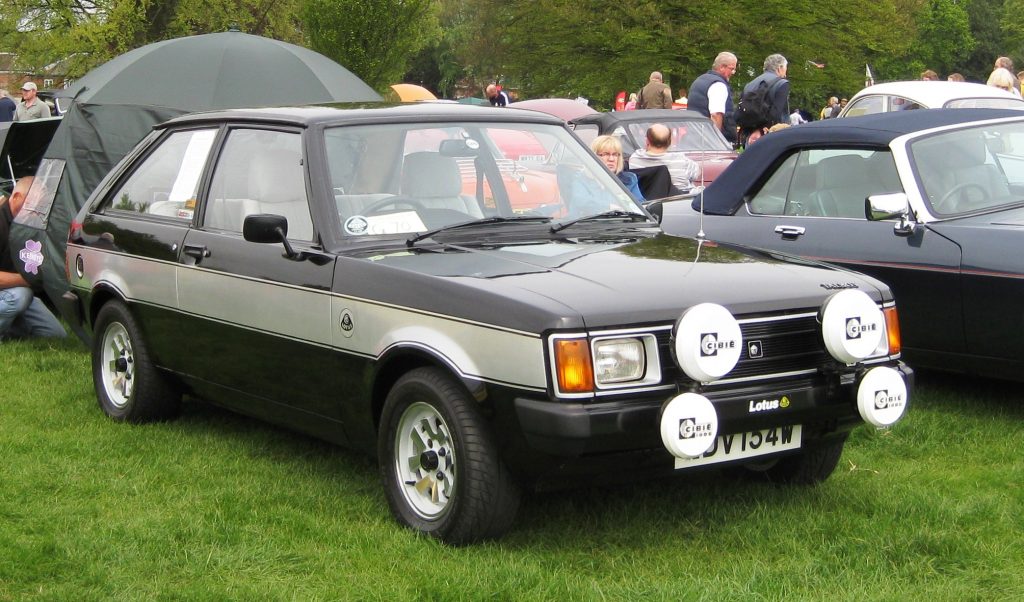
The Sunbeam Lotus had two particularly distinctive features, the first of which was the look. The first cars were produced in black with bright silver stripes down the side of the car. Not overly flashy, yet still a real stand-out paint job, a scheme for those who loves cars to see and nod with approval. The other big feature was the 5-speed ZF gearbox. Arranged in dog-leg formation, the box essentially became a little H-patterned 4-speed once it was out of first gear, perfect for enthusiastic driving.
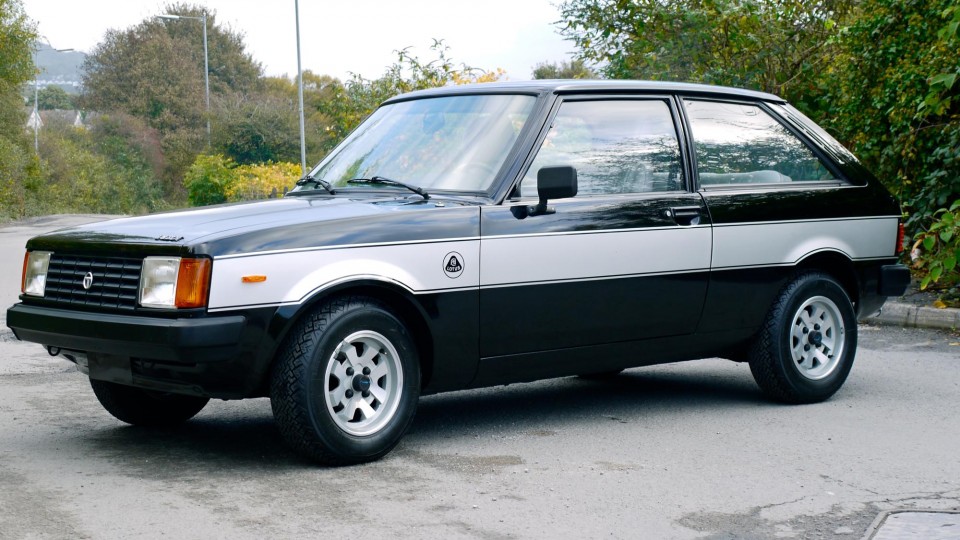
Lotus Carlton
At one point in time, the Lotus Carlton was the fastest saloon in the world, but that doesn’t really tell the whole story. At the time, it was considered bonkers, a mad man, a lunatic. This was a Lotus-tuned Vauxhall saloon that could manage 176mph thanks to a twin-turbo 3.6-litre straight-six engine. That’s like Lotus getting hold of a Vauxhall Insignia now, making it capable of over 200mph, and giving it a stylish paint job. That paint by the way – ‘Imperial Green’ – was the only colour it was available in, a deep green that looked almost black, giving it a mystical aura.
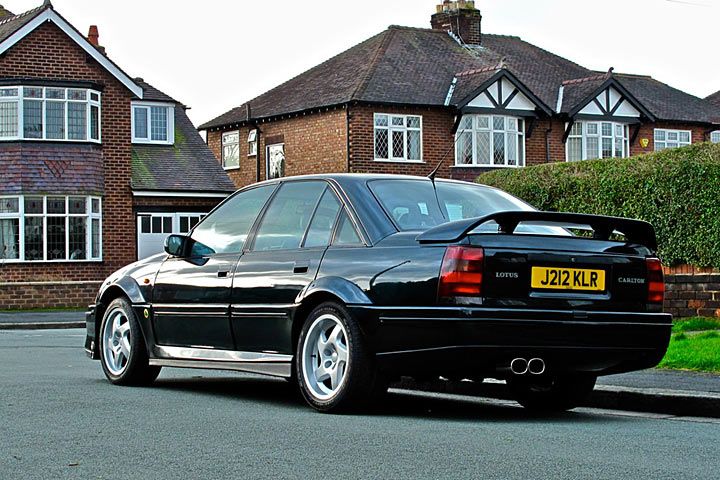
Of course, being racers, they didn’t stop with the engine. A 6-speed ZF gearbox was fitted, as well as upgraded suspension, steering, and brakes, so that the Carlton could deal better with the high speeds it was now easily capable of.
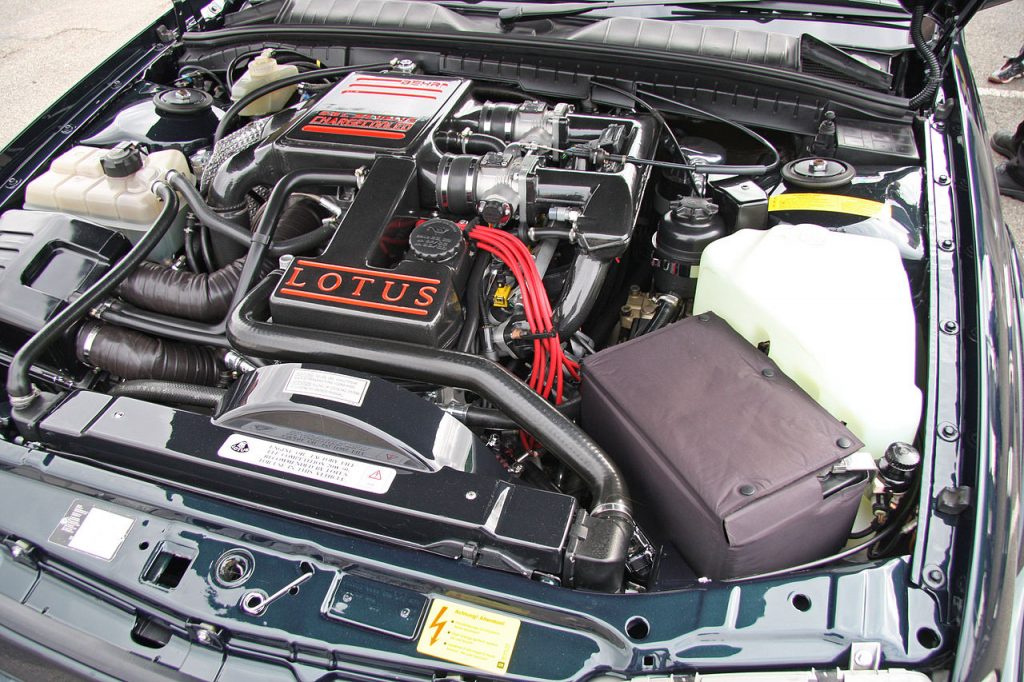
Inside, it was equipped with every gadget you could want at the time, air conditioning and leather seating was a real luxury, but it was still very much a Vauxhall Carlton inside, which led some to feel disappointed considering the asking price was a mighty £48,000 back in 1990.
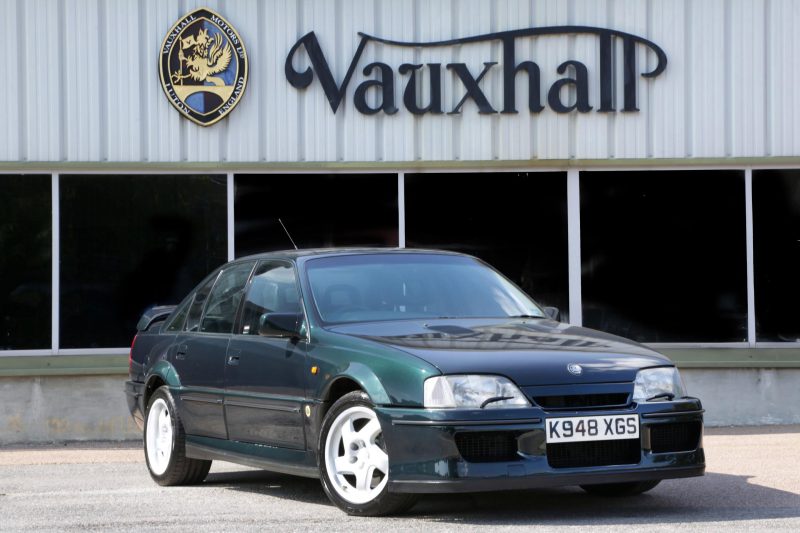
Commercially, the Lotus Carlton was a bit of a failure as it never reached the targets set for it by Vauxhall, production ending 150 cars short of targer. In every other way, though, this dark green brute of a saloon car was a true winner, and has deservedly gone down in history as a performance car legend.
In a way, it’s a little sad that Lotus doesn’t dip its toes into creating greatness from mediocrity anymore. The three donor cars all had one thing in common – they were a bit boring, a bit lifeless. What the Hethel maestros did was turn them into something with soul, cars that could get hearts racing, and by doing so put them into the history books instead of being swallowed and forgotten by time. We can think of a few cars nowadays that could do with that sort of treatment.
Lotus, if you’re reading this…
CLICK TO ENLARGE










Loved all these cars but it was the Sunbeam Lotus that I love the most. My teenage dream to own one I eventually did!! It was very fast and very thirsty too!!
Would love to own another one but prices are really high now. It’s £10K for a banger. Maybe if I win the lottery I’ll by a Sunbeam Lotus and an Audi S1 Quattro SWB fir good measure!!